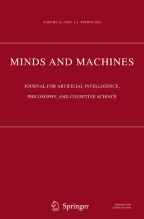Abstract
This paper explores the assumption of autonomy. Several arguments are presented against the assumption of runtime autonomy as a principle of design for artificial intelligence systems. The arguments vary from being theoretical, to practical, and to analytic. The latter parts of the paper focus on one strategy for building non-autonomous systems (the practice view). One critical theme is that intelligence is not located in the system alone, it emerges from a history of interactions among user, builder, and designer over a given set of data as mediated by the system. A second critical theme is that artificially intelligent systems are ongoing projects that must be continuously adapted and revised using joint person-machine efforts.
Similar content being viewed by others
Explore related subjects
Discover the latest articles, news and stories from top researchers in related subjects.References
Alterman, R. (1998), Adaptive planning, Cognitive Science, 12, pp. 93-421.
Alterman, R. Griffin, D. (1996), Improving case retrieval by remembering questions. In Proceedings of the Fourteenth National Conference on Artificial Intelligence, pp. 678-683.
Alterman, R. and Griffin, D. (1997), Improvement as a Function of Use. Technical Report TR-CS-95-182, Brandeis University.
Alterman, R. Zito-Wolf, R. and Carpenter, T. (1998), Pragmatic Action. Cognitive Science, 22(1), pp. 53-105.
Anderson, J. R. (1982), Acquisition of Cognitive Skill, Psychological Review, 89, 369-406.
Carpenter, T. and Alterman, R. (1994), A Reading Agent. In Proceedings of the Twelfth National Conference on Artificial Intelligence, Massachusetts Institute of Technology.
Cole, M. and Engestrom, Y. (1993), A Cultural Historic Approach to Distributed Cognition, In Salomon, G. ed, Distributed Cognitions, pp. 1-46, Cambridge University Press.
Friedman, B. and Kahn, Jr., P. (1992), ‘Human agency and responsible computing: implications for computer system design’, Journal Systems Software 17, pp. 7-14.
Grosz, B. (1996), Collaborative systems, Artificial Intelligence Magazine, 17, pp. 67-85.
Grosz, B. and Kraus, S. (1996), Collaborative Plans for Complex Group Action. Artificial Intelligence, 86, pp. 269-357.
Grosz, B. and Sidner, C. (1990), Plans for discourse, In P. R. Cohen, J. Morgan, and M. E. Pollack, Ed, Intentions in Communication, pp. 417-444, Bradford Books, Cambridge, MA.
Guralnik, D. B. ed, (1970), Webster's New World Dictionary of the American Language, Second College Edition, World Publishing Company, New York.
Hutchins, E. (1995), How a Cockpit Remembers its Speed, Cognitive Science, 19, pp. 265-288.
Lave, J. (1988), Cognition in Practice, Cambridge University Press, Cambridge.
Norman, D. A. (1988), The Psychology of Everyday Things, Basic Books.
Norman, D. A. (1991), Cognitive Artifacts, In J. M. Carroll, ed, Designing Interaction, pp. 17-38. Cambridge University Press.
Perkins, D. N. (1993), Person-Plus: A Distributed View of Thinking and Learning. In G. Salomon, ed, Distributed Cognitions, pp. 88-110, Cambridge University Press.
Pikes, R. E., Hart, P. E. and Nilsson, N. J. (1972), Learning and Executing Generalized Robot Plans. Artificial Intelligence, 3, pp. 251-288.
Scribner, S. (1984), Studying Working Intelligence, In B. Rogoff and J. Lave, eds, Everyday Cognition, pp. 9-40, Harvard University Press, Cambridge, MA.
Scribner, S. and Cole, M. (1981), The Psychology of Literacy, Harvard University Press, Cambridge, MA.
Shneiderman, B. (1995), ‘Looking for the bright side of agents’, ACM Interactions 2(1), pp. 13-15.
Shneiderman, B. (1998), Designing the User Interface: Strategies for Effective Human-Computer Interaction, 3rd ed, Reading, MA: Addison-Wesley Publ. Co., 639 pages. Related book site at <http://www.awl.com/DTUI>.
Shneiderman, B. and Maes, P. (1997), ‘Direct manipulation vs. software agents: A debate’, ACM Interactions 4(6), pp. 42-61.
Suchman, L. A. (1987), Plans and Situated Actions, Cambridge University Press, Cambridge.
Terveen, L. G. (1995), Overview of Human-Computer Collaboration, Knowledge-Based Systems, 8(2-3), pp. 67-81.
Rights and permissions
About this article
Cite this article
Alterman, R. Rethinking Autonomy. Minds and Machines 10, 15–30 (2000). https://doi.org/10.1023/A:1008351215377
Issue Date:
DOI: https://doi.org/10.1023/A:1008351215377
